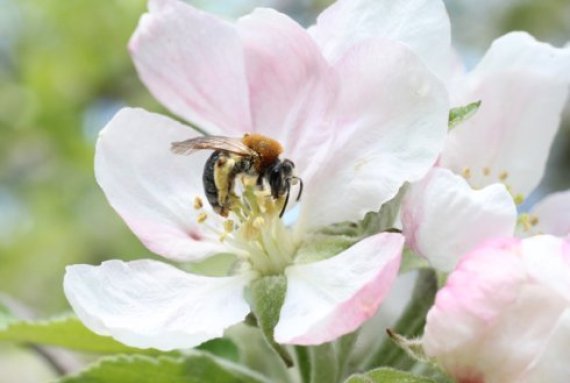Bees and other pollinators are essential for the gardener. But until now it was not known how essential they really are. Commissioned by the ministry of Economic Affairs, Alterra researched this in collaboration with fifteen framers using pollination tests. The crop yields of Elstar apples and blueberries were compared between different methods of pollinating: only by wind, by wind and insects, or by wind, insects and hand pollination.
The results are remarkable. Wild pollinators perform strikingly better than honeybees in transferring pollen to the flowers of Elstar apple trees. It was found that 60 percent of the pollination was performed by wild pollinators. Per hectare, this is equivalent to a quarter of the apple yield in kilos. Elstar apples have a low profit margin. Without the wild pollinators the apples would not be profitable.
For the blueberries a similar pattern was found, although the share of the pollination is lower (18 percent). This is because domestic bumblebees perform the majority of the pollination for blueberries. Monetized, per hectare of apple and berry cultivation, the wild bees supply thousands of euros per year.
The pollination effects of wild bees and bumblebees can also be seen on the apples. Wild pollinators produce fatter and more symmetric apples. This not only means more kilograms per hectare, but also a higher sales value. Pretty apples are categorised in higher quality classes and generate more profit. For the blueberries these effects are less apparent.
The Netherlands counts a hundred different wild bee species. The research by Alterra does not show how many and which species are needed for optimal pollination. It is clear however, that currently there are enough (wild) pollinators. They concluded this from the fact that hand pollination did not lead to extra yields.
The value of pollination by insects was very clear. This was seen when pollination by insects was hindered by a cap covering the flowers. The Elstar apple yield decreased with 40 percent. For the blueberries this decrease was 56 percent. Last Wednesday the science program ‘De Kennis van Nu’ focused on this Alterra research.

